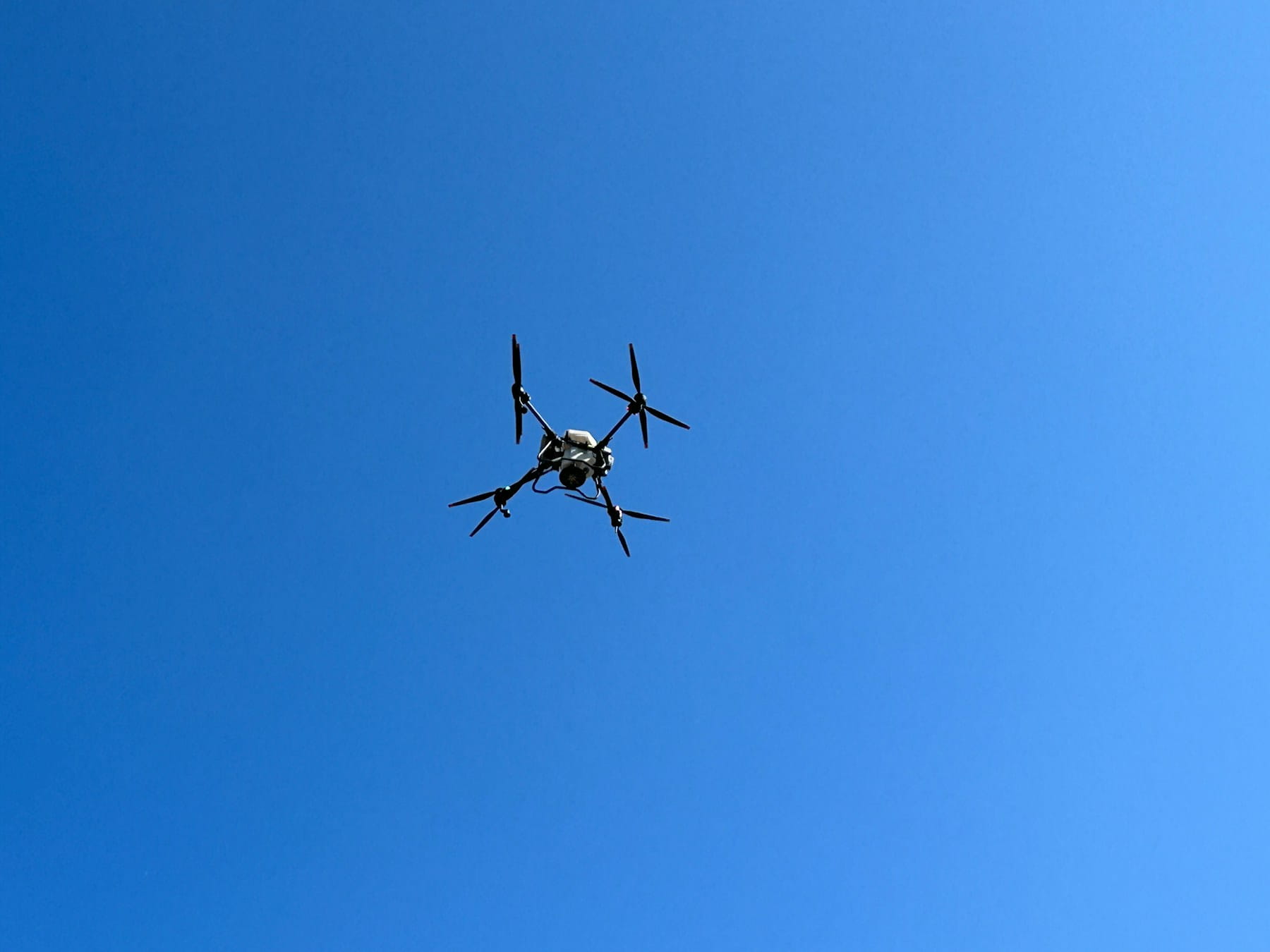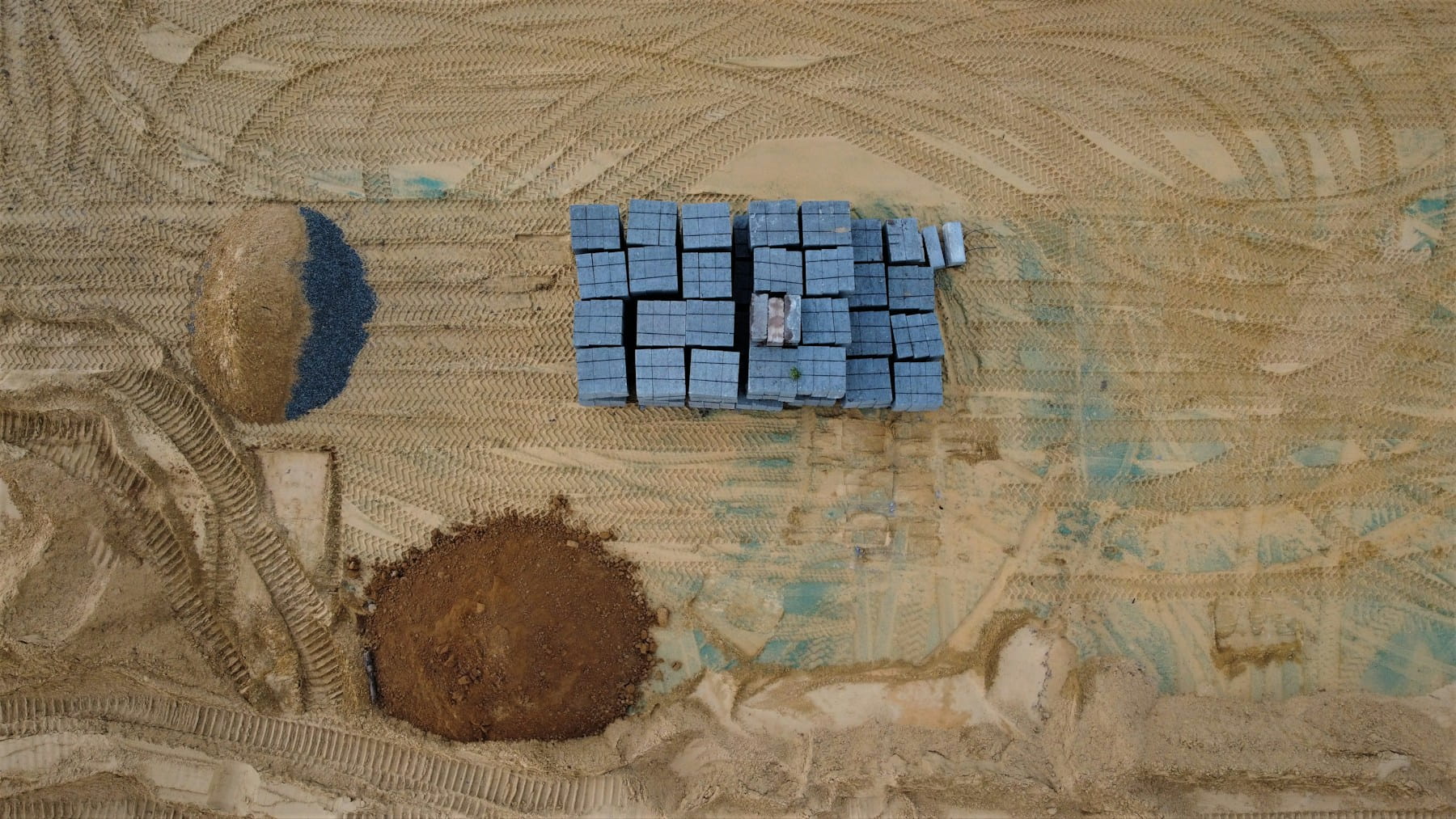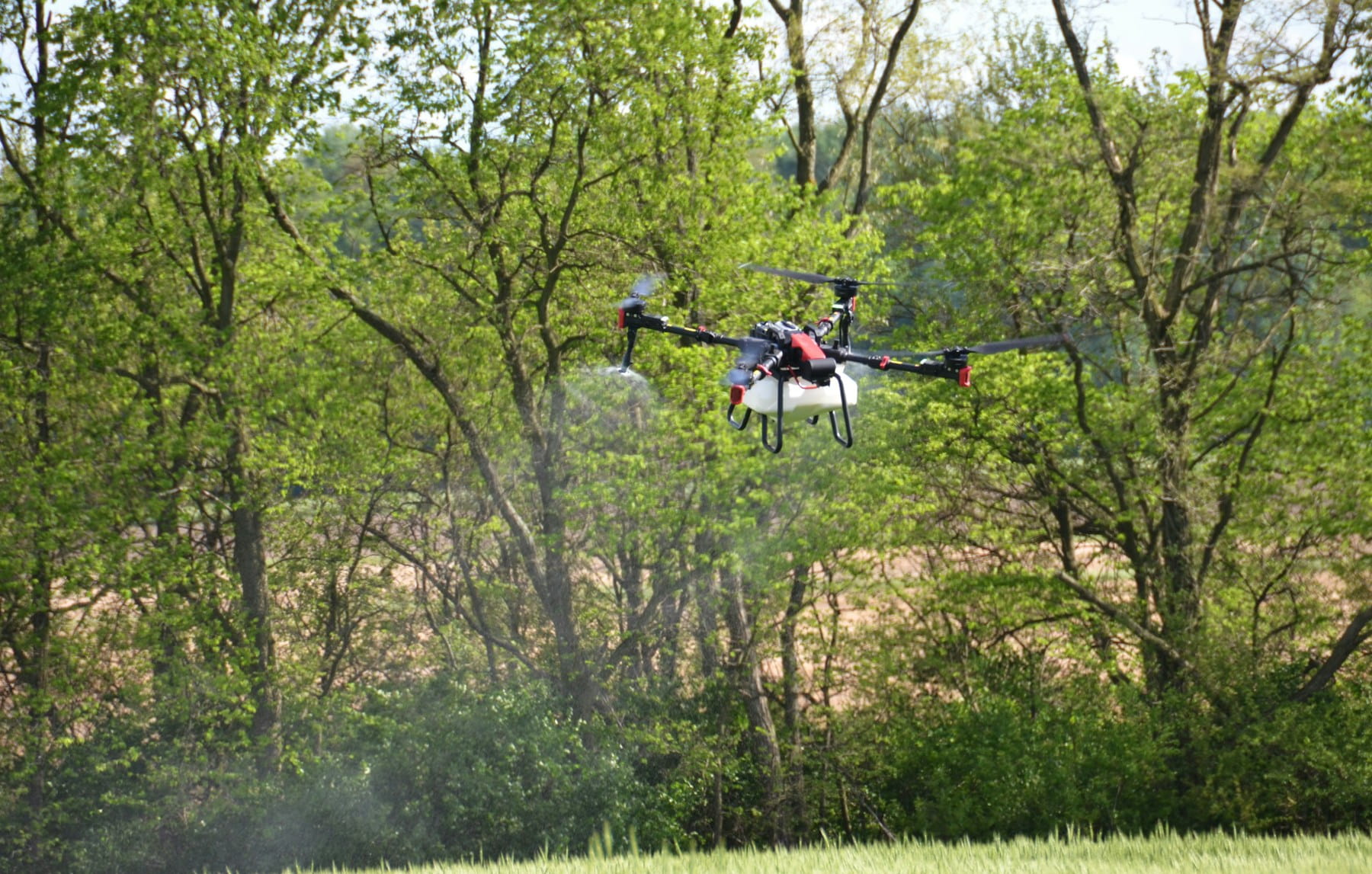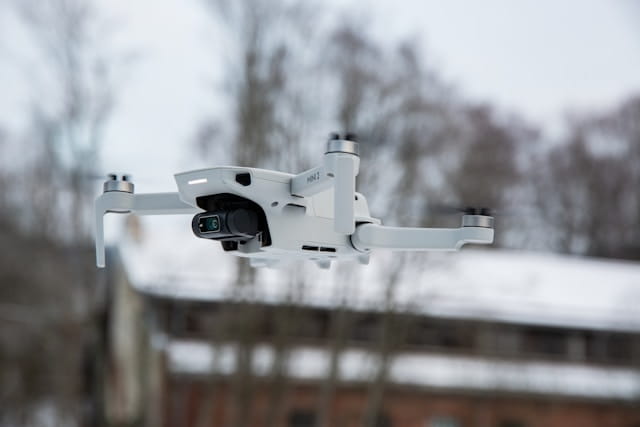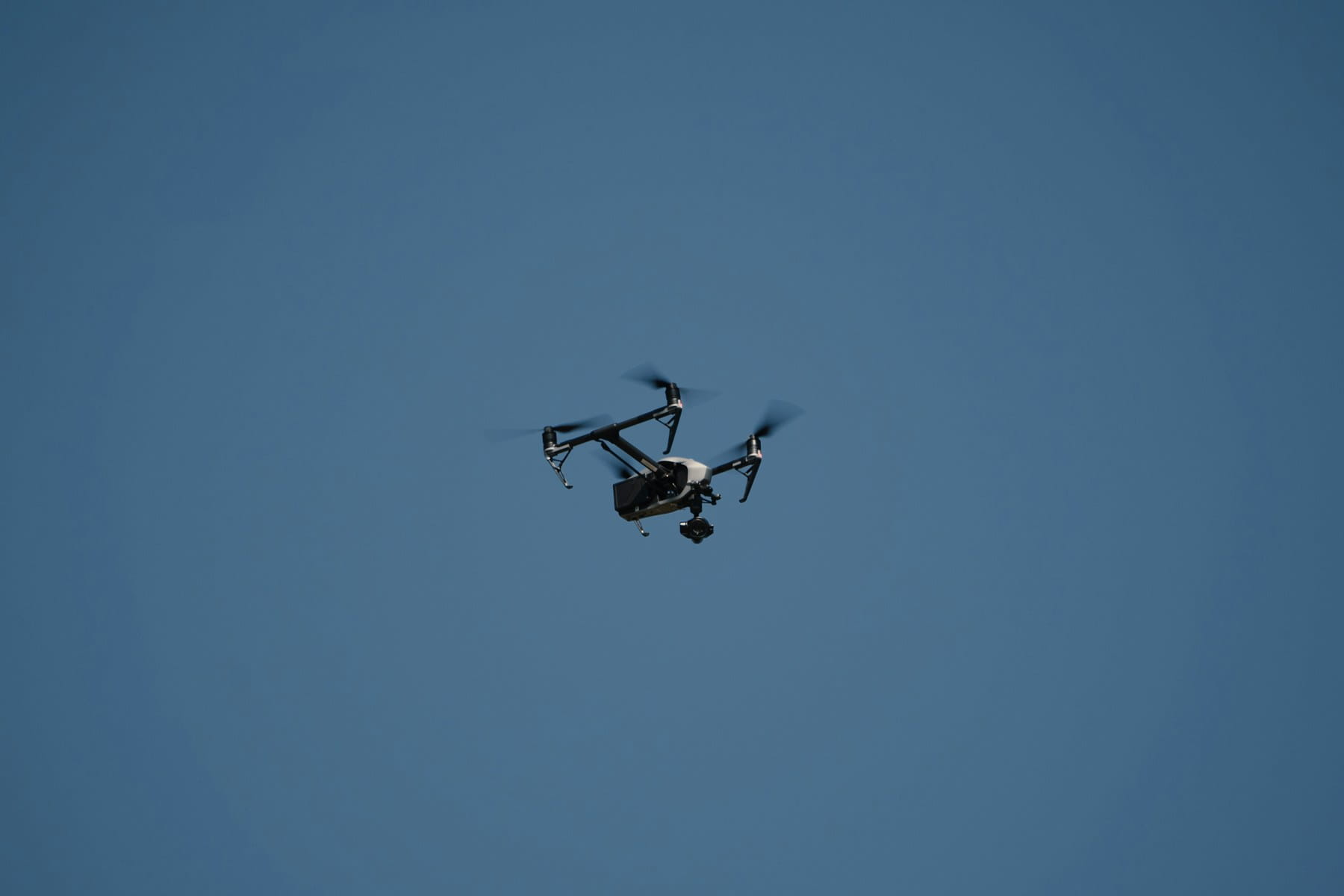Drones for site security offer advanced perimeter monitoring, rapid incident response, and integration with existing systems, enhancing safety, reducing costs, and providing real-time aerial intelligence for comprehensive site protection.
Security professionals face mounting pressure to protect increasingly complex sites with limited resources. Traditional surveillance methods often fall short when covering large perimeters, monitoring remote areas, or responding to incidents in real-time. Drones have emerged as a powerful tool that transforms how organizations approach site security, offering capabilities that complement existing systems while addressing critical gaps in coverage.
The integration of unmanned aerial systems into security operations represents more than just adding another camera to the mix. These platforms provide a three-dimensional perspective that ground-based systems cannot match, enabling rapid deployment to incident locations and comprehensive area monitoring that would require multiple fixed cameras to achieve.
Table of contents
- Understanding drone-based security applications
- Core security capabilities
- Sensor technology and payload options
- Integration with existing security infrastructure
- Autonomous operations and flight patterns
- Regulatory compliance for security operations
- Site assessment and deployment planning
- Personnel training and certification requirements
- Cost analysis and return on investment
- Weather limitations and operational windows
- Data management and storage protocols
- Common implementation challenges
- Future developments in security drone technology
Understanding drone-based security applications
Security drones serve multiple functions that extend far beyond basic surveillance. Perimeter monitoring represents one of the most common applications, where drones patrol fence lines, detect intrusions, and provide real-time alerts to security personnel. The aerial perspective allows operators to track potential threats across terrain that might be difficult to monitor with ground-based cameras alone.
Asset protection takes on new dimensions when drones can provide rapid response to alarm triggers. Construction sites benefit significantly from this capability, as equipment theft often occurs during off-hours when minimal staff are present. A drone can respond to motion sensors within minutes, capturing detailed footage of incidents as they unfold.
Emergency response scenarios showcase another strength of aerial security systems. When alarms sound, drones can reach incident locations faster than human security teams, providing immediate visual assessment that helps coordinate appropriate response measures. This rapid deployment capability proves particularly valuable for large industrial facilities where walking to distant alarm locations can take considerable time.
Event security presents unique challenges that drones address effectively. Large gatherings require crowd monitoring from perspectives that traditional cameras cannot provide. Elevated vantage points allow security teams to identify potential issues before they escalate, while the mobility of drones enables following specific individuals or tracking incidents across multiple areas.
Core security capabilities
Modern security drones integrate multiple sensor systems that work together to create comprehensive situational awareness. High-resolution cameras capture detailed imagery during daylight operations, while thermal sensors extend operational capabilities into nighttime hours. The combination of these technologies allows continuous monitoring regardless of lighting conditions.
Motion detection algorithms process video feeds in real-time, automatically flagging potential security events. These systems can distinguish between different types of movement, reducing false alarms caused by wildlife or environmental factors. Advanced platforms incorporate AI-driven analytics that learn normal patterns for specific sites, improving detection accuracy over time.
Audio capture capabilities add another layer of security monitoring. Directional microphones can detect sounds that might indicate break-ins, equipment malfunctions, or distress calls. When combined with visual monitoring, audio feeds provide security teams with more complete information about developing situations.
Two-way communication systems enable direct interaction between drone operators and individuals on the ground. This feature proves valuable for addressing minor security violations before they escalate or providing assistance to authorized personnel who might need directions or support.
Live streaming capabilities connect drones directly to security command centers, enabling real-time monitoring and immediate response coordination. Multiple personnel can view feeds simultaneously, allowing supervisors and field teams to collaborate effectively during security incidents.
GPS tracking and flight logging create detailed records of all security operations. These logs prove valuable for post-incident analysis, insurance claims, and demonstrating compliance with security protocols to clients or regulatory bodies.
Sensor technology and payload options
Camera specifications significantly impact the effectiveness of security operations. Resolution requirements vary based on the intended use, with 4K systems becoming standard for applications requiring detailed identification of individuals or license plates. Zoom capabilities extend the useful range of drone operations, allowing detailed surveillance from distances that maintain operational safety margins.
Thermal imaging sensors detect heat signatures that remain invisible to standard cameras. These systems prove particularly valuable for nighttime operations, detecting human presence even when individuals attempt to hide behind cover or in areas with poor lighting. Temperature-based detection also identifies equipment anomalies that might indicate maintenance issues or potential security risks.
Spotlight and searchlight attachments transform security drones into active response tools. High-intensity LED systems can illuminate areas of interest during investigations or serve as deterrents to potential intruders. Programmable light patterns can signal different types of alerts to ground-based security teams.
Loudspeaker systems enable broadcast communications from aerial platforms. These capabilities allow security personnel to issue warnings, provide instructions, or request identification from individuals within secured areas. The psychological impact of receiving directions from an aerial platform often proves more effective than ground-based announcements.
Multi-spectral sensors detect signatures beyond the visible and thermal spectrums. These specialized systems can identify camouflaged individuals or equipment, detect certain types of chemical signatures, or provide enhanced visibility through smoke or fog conditions.
Sensor fusion technology combines inputs from multiple systems to create comprehensive threat assessments. Advanced platforms process visual, thermal, and audio data simultaneously, correlating information to provide security teams with detailed situational awareness that single-sensor systems cannot match.
Integration with existing security infrastructure
Modern security drones work best when integrated with existing security systems rather than operating as standalone solutions. Connection protocols allow drones to interface with alarm systems, automatically deploying when specific triggers activate. This integration reduces response times and provides immediate visual confirmation of potential security breaches.
Video management systems can incorporate drone feeds alongside fixed camera outputs, creating unified monitoring dashboards for security personnel. Operators can switch between stationary and mobile camera views seamlessly, maintaining situational awareness across entire facilities from single control interfaces.
Access control systems can trigger drone deployment when unauthorized entry attempts occur. Badge readers, biometric scanners, and other access devices can send alerts that automatically launch security drones to investigate incidents. This automated response capability ensures consistent security coverage even during periods when human operators might be occupied with other tasks.
Communication integration connects drone operations with radio systems, cellular networks, and internet-based platforms. Security teams can coordinate response efforts using familiar communication tools while incorporating real-time aerial intelligence into their decision-making processes.
Database integration allows drone operations to cross-reference visual data with employee records, visitor logs, and vehicle registrations. Facial recognition systems can identify authorized personnel automatically, while license plate readers can verify that vehicles belong on-site during specific time periods.
Alarm correlation systems analyze inputs from multiple sources to determine appropriate response levels. Motion sensors, glass break detectors, and perimeter alarms can trigger different types of drone responses based on the nature and location of potential threats.
Autonomous operations and flight patterns
Pre-programmed patrol routes eliminate the need for constant pilot attention while providing consistent security coverage. These patterns can be customized based on site layout, threat assessments, and operational requirements. Different routes might be used for daytime and nighttime operations, reflecting changing security priorities throughout 24-hour periods.
Waypoint programming allows security teams to define specific locations that receive regular attention during patrol flights. Critical areas such as vehicle entrances, equipment storage locations, and building access points can receive more frequent monitoring than lower-risk zones.
Intelligent return-to-home functionality ensures operational safety even when communication links are interrupted. Drones programmed with RTH capabilities will automatically return to designated landing locations if they lose contact with operators or encounter low battery conditions.
Obstacle avoidance systems enable safe autonomous operations in complex environments. Advanced sensors detect and navigate around buildings, utility lines, trees, and temporary structures that might appear in flight paths. These sophisticated collision avoidance technologies reduce the pilot workload while maintaining operational safety standards.
Geofencing technology creates virtual boundaries that prevent drones from entering restricted airspace or leaving authorized operational areas. These systems prove particularly important for facilities located near airports or in areas with specific flight restrictions.
Dynamic flight path adjustment allows drones to modify patrol routes based on real-time conditions. Weather sensors can trigger route changes to avoid adverse conditions, while security alerts can redirect aircraft to investigate specific incidents without interrupting overall patrol operations.
Regulatory compliance for security operations
Part 107 regulations govern most commercial drone security operations in the United States. Pilots must hold appropriate certifications, while organizations must comply with operational limitations regarding flight altitude, visibility requirements, and airspace restrictions. Understanding comprehensive drone compliance requirements ensures all regulatory obligations are met. Security operations often involve flights beyond visual line of sight, which require additional authorization from aviation authorities.
Privacy considerations affect how security drones can be operated, particularly when flights might capture imagery of adjacent properties or public spaces. Organizations must develop policies that balance security requirements with privacy rights, often involving consultation with legal counsel to address specific operational scenarios.
Data protection regulations impose requirements on how security footage must be stored, accessed, and retained. Different jurisdictions maintain varying requirements for video surveillance data, requiring organizations to understand applicable laws in their operational areas.
Insurance requirements for drone security operations often exceed standard commercial coverage. Specialized policies address unique risks associated with autonomous aircraft operations, while liability coverage must account for potential property damage or privacy violations resulting from security flights.
Local ordinances may impose additional restrictions on drone operations within specific municipalities. Security teams must research and comply with city, county, and state regulations that might affect flight operations, noise levels, or operational time periods.
International operations require understanding of foreign aviation regulations and security laws. Organizations with facilities in multiple countries must develop compliance programs that address varying regulatory frameworks while maintaining consistent security standards.
Site assessment and deployment planning
Physical site surveys identify optimal launch and recovery locations for security drone operations. Landing zones must provide adequate space for safe operations while remaining secure from unauthorized access. Surface conditions, nearby obstacles, and weather protection all factor into site selection decisions.
Airspace analysis determines flight corridors that avoid conflicts with manned aircraft operations, utility lines, and other aerial hazards. This assessment process identifies altitude restrictions, no-fly zones, and coordination requirements with air traffic control or airport authorities.
Communication infrastructure requirements include reliable data links for real-time video transmission, GPS coverage for navigation accuracy, and backup communication systems for emergency situations. Site surveys must verify adequate signal strength throughout operational areas.
Power supply planning addresses charging requirements for multiple aircraft and support equipment. Solar charging systems, backup generators, and uninterruptible power supplies might be necessary for remote locations or extended operations during power outages.
Weather monitoring capabilities help predict operational limitations and plan alternative response strategies. Local weather stations, real-time condition monitoring, and forecasting services support operational decision-making throughout varying seasonal conditions.
Security for drone equipment requires protected storage areas, access controls, and procedures for preventing theft or tampering. High-value aerial systems need security measures that match the protection provided to other critical security infrastructure.
Personnel training and certification requirements
Pilot certification programs ensure operators understand both aviation regulations and security-specific operational procedures. Part 107 certification provides the foundation through comprehensive UAS pilot training, while specialized training addresses security applications, emergency procedures, and coordination with law enforcement agencies.
Ground crew training covers equipment maintenance, pre-flight inspections using systematic pre-flight procedures, and emergency response procedures. Support personnel must understand how to safely launch and recover aircraft, troubleshoot technical issues, and maintain operational readiness throughout security operations.
Security system integration training teaches operators how to coordinate drone operations with existing security infrastructure. Personnel must understand alarm protocols, communication procedures, and evidence handling requirements specific to security applications.
Emergency response training prepares teams for scenarios where drone operations interface with law enforcement, fire department, or medical response personnel. Understanding command structure, communication protocols, and airspace coordination prevents conflicts during critical incidents.
Continuing education requirements maintain operational competency as technology and regulations evolve. Security drone operators need regular updates on equipment capabilities, regulatory changes, and best practices developed through industry experience.
Scenario-based training exercises test operational procedures under realistic conditions. Simulated security incidents help teams develop response protocols, identify equipment limitations, and improve coordination between aerial and ground-based security elements.
Cost analysis and return on investment
Initial equipment costs vary significantly based on platform capabilities, sensor specifications, and operational requirements. Basic security drone systems start around $10,000, while advanced platforms with multiple sensors and autonomous capabilities can exceed $100,000. Organizations must balance capability requirements with budget constraints while considering long-term operational needs.
Operational expenses include pilot salaries, equipment maintenance, insurance premiums, and regulatory compliance costs. These ongoing expenses typically represent 30-50% of total program costs annually, requiring careful budgeting for sustainable operations.
Comparative analysis with traditional security measures often shows favorable economics for drone systems. Replacing multiple fixed cameras or reducing security guard requirements can generate significant savings that offset drone acquisition and operational costs within 2-3 years.
Risk reduction benefits provide additional ROI through decreased theft, reduced liability exposure, and improved incident response capabilities. Insurance premium reductions often accompany improved security measures, while faster incident response can minimize damage to property or inventory.
Scalability advantages allow drone security systems to expand coverage without proportional cost increases. Additional aircraft can extend operational hours or cover larger areas more cost-effectively than installing equivalent fixed infrastructure.
Technology depreciation schedules help organizations plan equipment replacement cycles and budget for capability upgrades. Rapid advancement in drone technology requires financial planning that accounts for 3-5 year equipment lifecycles while maintaining competitive security capabilities.
Weather limitations and operational windows
Wind speed thresholds determine safe operating conditions for different aircraft platforms. Most security drones operate effectively in winds up to 25 mph, while smaller systems may require grounding at lower wind speeds. Gusting conditions pose additional challenges that require real-time assessment of operational safety.
Precipitation impacts both flight safety and sensor effectiveness. Rain can damage sensitive electronics while reducing camera visibility and thermal sensor accuracy. Snow and ice create additional weight that affects flight performance and battery life. Organizations need weather monitoring systems that provide advance warning of adverse conditions.
Temperature extremes affect battery performance and electronics operation. Cold weather significantly reduces flight time while hot conditions can cause overheating in camera systems or flight controllers. Operational procedures must account for seasonal variations and extreme weather events.
Visibility requirements for pilot operations become more critical during adverse weather conditions. Fog, haze, and precipitation reduce visual range, potentially requiring operations to be suspended until conditions improve. Instrument flight capabilities remain limited in current drone technology.
Lightning risks require immediate suspension of flight operations when thunderstorms threaten operational areas. Static electricity buildup and electromagnetic interference can damage drone systems, while direct strikes pose obvious safety hazards.
Seasonal planning helps organizations prepare for weather-related operational limitations. Winter operations might require heated storage facilities, while summer conditions could limit flight times during peak temperature periods. Advance planning ensures continuity of security coverage throughout varying weather patterns.
Data management and storage protocols
Video storage requirements for security applications often mandate retention periods of 30-90 days, requiring substantial data storage capacity. High-definition video from multiple sensors can generate several terabytes of data monthly, necessitating scalable storage solutions and backup systems.
Encryption protocols protect sensitive security footage from unauthorized access during transmission and storage. End-to-end encryption ensures that intercepted communications cannot be decoded, while stored data remains protected through access controls and secure storage systems.
Chain of custody procedures maintain legal admissibility of security footage for potential criminal proceedings or insurance claims. Detailed logging of access, handling, and transfer activities creates documentation that supports legal requirements for evidence handling.
Backup and recovery systems prevent loss of critical security data due to equipment failures or cyber attacks. Redundant storage systems, off-site backups, and disaster recovery procedures ensure continuity of security operations and preservation of important evidence.
Access control systems limit who can view, download, or modify security footage. Role-based permissions ensure that only authorized personnel can access sensitive information, while audit trails track all system interactions for compliance and security purposes.
Data analytics platforms can process large volumes of security footage to identify patterns, generate reports, and support investigative activities. Machine learning algorithms can flag unusual activities automatically, while search capabilities help locate specific incidents within extensive video archives.
Common implementation challenges
Pilot shortage affects many organizations attempting to establish drone security programs. Qualified operators with both aviation and security experience remain scarce, often requiring organizations to invest in training existing personnel or competing for limited experienced pilots in the job market.
Equipment reliability issues can disrupt security operations when drones experience mechanical failures or software glitches. Redundant systems, preventive drone maintenance programs, and rapid repair capabilities minimize operational impacts, but organizations must plan for equipment downtime.
Integration complexity arises when connecting drone systems with existing security infrastructure. Different manufacturers use varying communication protocols, data formats, and software interfaces that require custom integration work or middleware solutions to achieve seamless operations.
Regulatory changes can impact operational procedures, equipment requirements, or pilot certification standards. Organizations must monitor regulatory developments and maintain flexibility to adapt operations as aviation authorities modify drone operation requirements.
Public acceptance challenges affect operations in areas where community members express concerns about privacy, noise, or safety. Proactive community engagement, transparent operational policies, and demonstrated safety records help address public concerns about drone security operations.
Cybersecurity threats targeting drone systems require robust protection measures for communication links, control systems, and data storage. Potential attacks could compromise security operations, steal sensitive footage, or even hijack drone systems for malicious purposes.
Future developments in security drone technology
Artificial intelligence integration will automate threat detection, behavior analysis, and response coordination. Machine learning systems will recognize normal patterns for specific sites, automatically identifying anomalies that require human attention. Predictive analytics will help security teams anticipate potential threats based on historical patterns and current conditions.
Swarm capabilities will enable multiple drones to coordinate operations automatically, providing comprehensive coverage of large areas while maintaining redundant surveillance capabilities. Swarm systems can adapt to equipment failures by redistributing coverage among remaining aircraft.
Extended flight times through improved battery technology and solar charging systems will enable longer patrol operations without human intervention. Hydrogen fuel cells and tethered power systems may provide continuous operation capabilities for critical security applications.
Enhanced night vision systems will improve low-light performance beyond current thermal imaging capabilities. Advanced sensor fusion will combine multiple imaging technologies to provide clearer identification of threats during darkness or adverse weather conditions.
Edge computing capabilities will enable real-time data processing aboard drone platforms, reducing communication bandwidth requirements while improving response times. Onboard analytics can trigger automatic responses to security events without waiting for ground-based processing.
5G connectivity will provide high-bandwidth, low-latency communication links that support real-time video streaming, remote control operations, and coordination between multiple aircraft. Improved connectivity will enable more sophisticated autonomous operations and better integration with existing security systems.
Why Advanced Security Drone Systems Matter for Professional Operations
Managing security drone operations requires sophisticated coordination of technology, personnel, and compliance requirements. Professional operators who implement comprehensive security protocols gain significant operational advantages while maintaining the highest safety and regulatory standards through systematic flight data monitoring.
- Enhanced protection: Advanced drone systems provide 24/7 perimeter monitoring with immediate response capabilities
- Cost efficiency: Reduced need for traditional security infrastructure while expanding coverage areas
- Regulatory confidence: Professional compliance management ensures adherence to aviation and security regulations
- Operational intelligence: Real-time aerial data enables proactive threat assessment and response coordination
Fast Facts: Security Drone Capabilities
| Security Application | Traditional Method | Drone Method | Improvement |
|---|---|---|---|
| Perimeter Monitoring | Multiple fixed cameras | Single mobile platform | 70-80% cost reduction |
| Incident Response | Ground security team | Aerial rapid deployment | 5-10x faster response |
| Area Coverage | Static surveillance zones | Dynamic patrol patterns | 300-500% coverage increase |
| Night Operations | Limited visibility systems | Thermal imaging capability | 24/7 operational capability |
| Data Collection | Manual documentation | Automated recording/analysis | 90% reduction in processing time |
Getting Started with Professional Security Drone Operations
- Conduct security assessment to identify coverage gaps and operational requirements
- Select appropriate technology balancing sensors, autonomy, and integration capabilities
- Implement training programs following certified pilot standards
- Establish compliance protocols ensuring regulatory adherence
- Develop integration procedures connecting with existing security infrastructure
Critical preparation: Before deploying security drones, ensure your operational framework addresses privacy requirements, data protection protocols, and emergency response coordination specific to security applications.
In Summary
Security drone systems represent a fundamental advancement in how organizations protect their facilities and assets. Professional implementation requires careful attention to planning, training, compliance, and technology integration, but organizations ready to invest in proper preparation can realize significant security improvements through well-designed drone programs.
Ready to Transform Your Security Operations?
Join security professionals who have revolutionized their protection capabilities through advanced drone systems and comprehensive operational management. Whether you're monitoring large industrial facilities, protecting construction sites, or ensuring event security, sophisticated aerial technologies enable enhanced protection and operational excellence.
Start your free trial today — no credit card required.
Or book a demo to see how DroneBundle integrates security drone operations with compliance management, maintenance tracking, and performance analytics in a platform designed specifically for professional security operations.
Transform your security capabilities into competitive advantages. With comprehensive drone security systems and professional operational support, every patrol becomes an opportunity to demonstrate technical expertise and deliver superior protection outcomes.
